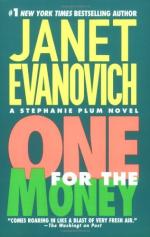|
This section contains 4,841 words (approx. 17 pages at 300 words per page) |

|
SOURCE: "Misers and Spendthrifts," in Money and Fiction: Literary Realism in the Nineteenth and Early Twentieth Centuries, Cornell University Press, 1984, pp. 27-41.
In the following excerpt, Vernon gives an historical overview on the love of money (especially paper money), which led to the comeback of one old literary type (the miser) and to the rise of a new literary type (the spendthrift).
Though they weren't necessarily listening to each other, when it came to money nineteenth-century novelists could speak with one voice. "Money is life. Money is all powerful," says Balzac's Père Goriot. The narrator of Dostoevsky's The Gambler exclaims, "Money is everything!" In Dickens's Our Mutual Friend Bella says, "I have money always in my thoughts and desires," and in Hardy's The Return of the Native Diggory Venn echoes her: "Money is all my dream." Dr. Thorne, in Trollope's Doctor Thorne: "A rich man can buy...
|
This section contains 4,841 words (approx. 17 pages at 300 words per page) |

|


